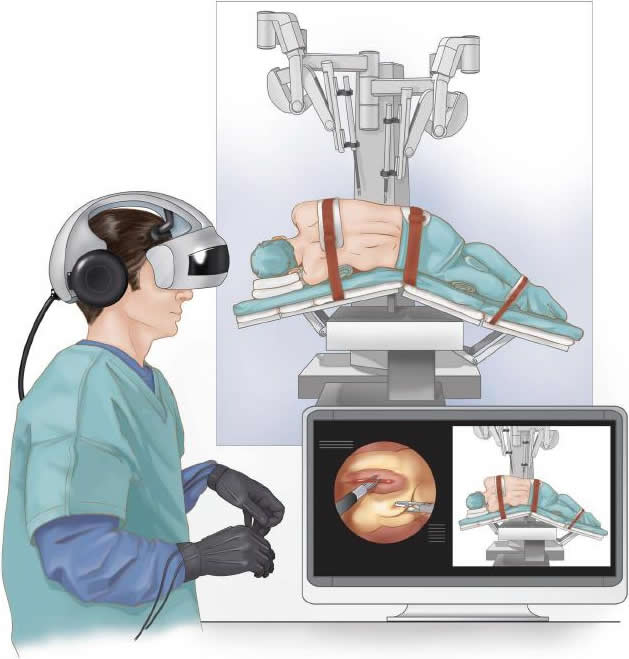Brief Laparoscopic History
Laparoscopic Surgery – Introduction
History of Minimally Invasive Surgery:
 A desire to evaluate the inside of a patient’s abdomen or chest with limited injury existed as far back as Hippocrates (460-375 B.C.). He made reference to examination of the rectum with a speculum. Several technical advances over the next twenty centuries led to the origin of modern endoscopy.
A desire to evaluate the inside of a patient’s abdomen or chest with limited injury existed as far back as Hippocrates (460-375 B.C.). He made reference to examination of the rectum with a speculum. Several technical advances over the next twenty centuries led to the origin of modern endoscopy.
Phillip Bozzini (1773-1809) developed the Lichtleiter. The light conductor invention offered improved illumination by redirecting light to the observer’s eye from the internal cavities. Limited primarily to urologic and gynecologic procedures, the Lichtleiter and variations of the device were used for the next 100 years. With Edison’s invention of the incandescent light, a new technology was introduced into minimally invasive surgery.
In 1901 George Kelling used the new technology to examine the abdominal cavity of dogs. This was quickly followed by a report by Jacobeus, a surgeon from Stockholm, who coined the phrases “laparoscopie” and “thoracoscopie”. Jacobeus was first to publish a series of abdominal and thoracic examination in humans using minimally invasive techniques.
Bertram Berheim from Johns Hopkins was the first in 1911 to perform laparoscopy in the United States. Numerous advances were made over the next 70 years before this surgical approach would become standard treatment. The most important being the advent of the insufflator (Kurt Semm), fiberoptics and the rod-lens system (Harold Hopkins).
Although the invention of the first solid state camera was unveiled in 1982, it was not until 1987 before Phillipe Mouret would perform the first laparoscopic cholecystectomy. This event ignited the world of laparoscopic surgery. Today, 98% of all gallbladders removed surgically are removed with the laparoscopic approach. The shift from the open method of gallbladder removal to the laparoscopic method took fewer than 5 years to occur. During the past decade, a dynamic evolution in Minimally Invasive Surgery has occurred that has no equal in the history of surgery. Today, few abdominal surgical procedures escape the laparoscopic approach.
As noted above, a number of surgeons have contributed to the advancement of Minimally Invasive Surgery. The rapid evolution in this field is due to their courage and ingenuity.
As a member of the United States’ Laparoscopic Founders’ Society, Dr. Frantzides has been identified as a pioneer in the field of Minimally Invasive Surgery. He is also credited with describing fourteen new laparoscopic procedures. Dr. Frantzides laparoscopic surgical experience is extensive.
The world of laparoscopy has expanded during the last decade to include most surgical procedures involving all abdominal and chest contents as well as the brain and heart. 1994 saw the introduction of robotics into the operating room. A robotic arm was used to hold the camera replacing the camera operator. Two years later, a surgery was performed with the patient and surgeon in different locations using the Internet.
Future technologies that will be introduced seem boundless. The operating room of tomorrow may not require the presence of a surgeon. High-tech implements may even make incisions a mere historical reference. Major surgery may be performed on an outpatient basis avoiding hospitalization and post-surgical complications may be virtually eliminated.
